Do you have a question about the Panasonic Viera TX-L32DT35E and is the answer not in the manual?
Instructions for safely connecting and handling the power plug and lead.
Guidance on power source requirements and safe installation practices.
Covers warnings against modifying the TV, exposure to moisture, and foreign objects.
Instructions for cleaning the display panel, cabinet, and stand.
Guidance on cleaning the mains plug to prevent electrical hazards.
Lists the items typically included with the television.
Information on optional accessories that can be purchased separately.
Identifies and explains the functions of each button on the remote control.
Details the various input/output terminals on the TV.
Explains how to use the remote control and navigate on-screen menus.
Provides diagrams for connecting satellite, cable, DVD, and VCR equipment.
Instructions on how to bundle and secure cables for neatness.
Illustrates connecting to network sources like set-top boxes and recorders.
Guides through selecting language, country, and tuning modes for auto setup.
Explains how to turn on the TV and access the VIERA Connect service.
Covers turning on the TV, selecting modes, and basic channel tuning.
Describes selecting channels via Channel List, Information Banner, and TV Guide.
Explains the elements displayed in the information banner and their meanings.
Details how to display or hide subtitles using the information banner.
Allows freezing pictures and checking/changing current status settings.
Configures the TV to automatically enter standby mode after a set period.
Explains automatic aspect ratio selection and manual adjustment methods.
Allows switching to the previously viewed channel or input mode.
Explains the EPG and how to navigate through channels and programmes.
Guides on selecting and viewing programmes listed in the TV Guide.
Covers selecting programmes, functions, and defining event details.
Explains how to check, change, or cancel timer programming events.
Explains FLOF, TOP, and List modes, and basic teletext page selection.
Covers hidden data reveal, index, and favourite page functions.
Guides on selecting input modes and viewing content from external devices.
Provides safety advice for viewing 3D content and using 3D eyewear.
Explains automatic mode switching and manual 3D format adjustment.
Guides on accessing the menu and adjusting various 3D settings.
Explains how to access features and perform operations via VIERA TOOLS.
Guides on navigating menus, selecting items, and using input methods.
Covers free text input methods and resetting various TV settings.
Explains the different viewing modes for picture optimization.
Covers adjustments like Contrast, Tint, Colour Balance, and Eco Mode.
Includes settings for 3D, noise reduction, and frame creation.
Covers Intelligent Frame Creation, 24p Smooth Film, and Film Cadence Detection.
Covers AV Colour System, DVI Input, and resetting picture settings.
Explains sound modes and basic adjustments like Bass, Treble, and Balance.
Covers Surround sound, Auto Gain Control, Volume Correction, and Speaker Distance.
Details MPX, Audio Preference, and SPDIF Selection for audio output.
Covers Timer Programming, Off Timer, and Auto Standby settings.
Includes Eco Navigation, Recording Setup, VIERA Link, and Power Link settings.
Covers standby power saving, auto standby, download, and child lock features.
Includes Favourites Edit, Channel List, Auto Setup, and Manual Tuning for DVB-S.
Covers Favourites Edit, Channel List, Auto Setup, Manual Tuning for DVB-C.
Includes Favourites Edit, Channel List, Auto Setup, Manual Tuning for DVB-T.
Covers Channel List, Auto Setup, and Manual Tuning for analogue channels.
Includes OSD language, audio/subtitle preferences, and display settings.
Covers VIERA Connect Banner, Playing Time, MHP Auto Start, Radio Mode, etc.
Includes USB Keyboard, Shipping Condition, System Update, Licence, etc.
Covers GUIDE Plus+ Settings, Postcode, and System Information.
Covers Power on Preference, USB Charge, Power Save, Time Zone, Channel List.
Guides through steps for DVB-S auto setup, LNB, and satellite configuration.
Explains the procedure for auto setup using the TV's side panel buttons.
Details setting LNB configuration and selecting satellites for DVB-S.
Guides on setting search modes and executing the auto setup process.
Details setting DVB-C auto setup parameters and execution.
Explains the procedure for auto setup using the TV's side panel buttons.
Guides through DVB-T channel selection and auto setup execution.
Details analogue channel selection and auto setup execution.
Explains the procedure for auto setup using the TV's side panel buttons.
Covers DVB selection, menu access, and tuning menu options.
Includes Favourites Edit, Channel List, Auto Setup, and Manual Tuning functions.
Guides on adding and editing favourite channels in DVB lists.
Explains how to skip unwanted channels or edit existing ones in the list.
Details the process for manually tuning DVB-S channels.
Provides instructions for manually tuning DVB-C channels.
Guides through the manual tuning process for DVB-T channels.
Explains how to update the channel list automatically.
Guides on how to check the signal quality for DVB reception.
Describes using the attenuator to reduce strong DVB-C signals.
Covers analogue channel selection, menu access, and tuning.
Explains how to skip or edit analogue channels in the list.
Guides on editing channel positions and renaming channels.
Describes fine-tuning for individual programmes after auto setup.
Guides on how to access the timer programming menu.
Covers selecting modes and initiating timer programming.
Groups steps for starting settings, selecting function, and defining event details.
Explains how to store the configured timer programming events.
Guides on accessing the child lock menu and its options.
Covers PIN entry, lock list management, and locking channels/inputs.
Guides on accessing the input label menu for easier identification.
Explains how to name input modes using the character input screen.
Guides through DVB-T selection, menu access, and MHP auto start.
Explains how to manually load and start MHP applications.
Provides instructions on how to stop an active MHP application.
Guides on accessing the common interface menu for CI modules.
Refers to following the on-screen guide for operating CI services.
Guides on accessing the shipping condition menu for reset.
Details the steps for restoring the TV to its original factory settings.
Guides on accessing the system update menu for software checks.
Covers automatic updates and manual update searches.
Guides on selecting PC input and adjusting PC menu settings.
Guides on accessing Picture Menu, Viewing Mode, and other functions.
Covers adjustments for white balance and colour management settings.
Details Gamma curve selection and other advanced picture settings.
Explains how to lock picture settings using a PIN number.
Guides on copying settings to other inputs or viewing modes.
Guides on accessing the recording setup menu for USB HDD.
Covers the process of initializing and setting up the USB HDD for recording.
Covers selecting, confirming, and naming the USB HDD.
Confirms enabling the initialized USB HDD for recording purposes.
Guides on accessing the recording setup menu.
Explains how to record the current programme instantly.
Covers starting and stopping the one-touch recording process.
Guides on starting, operating, and stopping REW LIVE TV recording.
Instructions for inserting and removing SD Cards and USB Flash Memory.
Covers inserting media, starting player, and selecting the device.
Guides on selecting content types like Photo, Video, Music, or Recorded TV.
Covers thumbnail display, error handling, and photo information.
Explains sorting photos by folder, date, or month, and selecting groups.
Describes viewing photos individually or in a slideshow.
Explains how to create 3D photos from pairs of images.
Guides on the process of creating 3D photos from selected images.
Covers settings for slideshow effects, interval, and background music.
Covers selecting slideshow frame types and transition effects.
Details screen modes, burst playback, interval, and repeat options.
Explains how to select background music for photo slideshows.
Guides on switching between connected media devices and content types.
Describes thumbnail display, preview options, and title information.
Groups playback from title view and playback from scene view.
Details playback operations like rewind, pause, fast forward, and stop.
Covers Video Preview and Repeat settings for playback.
Explains how to confirm or change current playback status like audio and aspect.
Guides on playback, editing recording content, and deleting selected content.
Details playback controls, chapter list playback, and aspect ratio changes.
Explains how to switch between media devices and content types.
Sets the initial digital audio output signal for DIGITAL AUDIO OUT and HDMI2.
Describes music playback from folder view and file view.
Details playback of selected files from file view.
Covers playback controls and music setup options like repeat.
Explains DLNA standards for digital electronics and home networking.
Guides on setting up PCs or recorders as DLNA media servers.
Introduces VIERA Connect for internet services and online content.
Provides diagrams for wired and wireless network connection setups.
Guides through accessing the network setup menu.
Covers settings for VIERA Name, DLNA Remote Control, and Network Remote Control.
Covers setting network type to wired and configuring IP/DNS settings.
Details setting up proxy server address and port number.
Performs automatic testing of the network connection for the TV.
Guides through selecting network type and access point settings.
Performs automatic testing of the wireless network connection.
Explains WPS Push Button and WPS PIN methods for connection.
Guides on searching for available wireless access points.
Covers entering the encryption key for wireless connection.
Explains manual setup for SSID, authentication, and encryption type.
Accesses website to check for TV software updates.
Guides on displaying icons, selecting servers, and selecting files from media servers.
Describes single view and slideshow modes for photo playback.
Details video playback operations and music playback from folders.
Explains how to control a DIGA Recorder using the TV remote.
Covers slideshow, video, and music setup options.
Details SPDIF selection for digital audio output settings.
Covers account management, service restrictions, and notifications.
Groups Q-Link preparations, features, and connection methods.
Covers VIERA Link connection, features, and compatibility.
Provides a summary table of Q-Link and VIERA Link features.
Describes HDMI and audio cable connections for VIERA Link devices.
Refers to a table detailing control capabilities for compatible equipment.
Covers Q-Link setup, preset download, and direct TV recording.
Explains how to perform direct TV recording using a connected recorder.
Provides instructions on how to stop an ongoing recording.
Covers connecting equipment, using HDMI/SCART cables, and setup procedures.
Highlights features like preset download, easy playback, and power links.
Covers Standby Power Save and Intelligent Auto Standby functions.
Explains recording the current programme directly via DIGA Recorder.
Guides on pausing live TV, resuming playback, and managing recorded content.
Details how to use playback controls like search, pause, and stop.
Guides on displaying the VIERA Link menu and selecting control options.
Explains how to select the connected equipment to control via remote.
Describes how to operate connected equipment menus using the TV remote.
Provides guidance for managing multiple recorders or players.
Explains how to access equipment not using VIERA Link.
Covers selecting Home Cinema or TV speakers and volume control.
Guides on enjoying multi-channel sound via an amplifier using HDMI.
Provides diagrams for connecting satellite, cable, recording, DVD, and HDMI devices.
Describes wired network, USB devices, and their connections.
Details PC connections via HDMI/DVI and speaker system connections.
Describes connections for Camcorders, Game Equipment, and Headphones.
Maps equipment types to available TV terminals for connectivity.
Explains Auto Aspect, Aspect Control Signals, and Auto Mode recognition.
Lists supported file extensions, resolutions, and restrictions for photos.
Details supported containers, codecs, and restrictions for video files.
Lists supported audio codecs and file extensions for music files.
Explains DivX capabilities, subtitle text files, and Video-on-Demand.
Covers compatibility for SD Cards, USB Flash Memory, and USB HDDs.
Provides detailed pin information for SCART and HDMI terminals.
Lists applicable HDMI features and DVI connection steps.
Provides instructions for connecting a PC to the TV via HDMI or D-sub.
Covers general USB device compatibility and usage guidelines.
Explains USB keyboard and gamepad key mapping for TV control.
Describes the method for inputting characters using numeric buttons.
Lists supported signals for COMPONENT, HDMI, and PC inputs.
Addresses common problems related to picture quality and sound output.
Covers issues with channel tuning, Q-Link, VIERA Link, and recording.
Addresses the occurrence of spots on the LCD panel.
Provides solutions for chaotic, no image, blurry, and unusual screen issues.
Addresses problems like no sound, low sound, or distorted sound.
Covers problems with seeing 3D images and eyewear functionality.
Troubleshoots unusual sound or picture problems with HDMI connections.
Addresses issues with network connection, DLNA, and VIERA Connect.
Covers TV not turning on, standby mode, remote, heat, and panel issues.
Provides guidance for resolving error messages like faulty dish or overcurrent.
Lists trademarks and registered trademarks of companies and products mentioned.
Details power consumption, physical dimensions, and display panel characteristics.
Covers audio output, PC signal compatibility, and receiving system details.
Lists detailed specifications for AV, Component, HDMI, PC, and other terminals.
Provides disposal instructions for old equipment and batteries.
Includes compliance statements and customer record keeping advice.
Instructions for safely connecting and handling the power plug and lead.
Guidance on power source requirements and safe installation practices.
Covers warnings against modifying the TV, exposure to moisture, and foreign objects.
Instructions for cleaning the display panel, cabinet, and stand.
Guidance on cleaning the mains plug to prevent electrical hazards.
Lists the items typically included with the television.
Information on optional accessories that can be purchased separately.
Identifies and explains the functions of each button on the remote control.
Details the various input/output terminals on the TV.
Explains how to use the remote control and navigate on-screen menus.
Provides diagrams for connecting satellite, cable, DVD, and VCR equipment.
Instructions on how to bundle and secure cables for neatness.
Illustrates connecting to network sources like set-top boxes and recorders.
Guides through selecting language, country, and tuning modes for auto setup.
Explains how to turn on the TV and access the VIERA Connect service.
Covers turning on the TV, selecting modes, and basic channel tuning.
Describes selecting channels via Channel List, Information Banner, and TV Guide.
Explains the elements displayed in the information banner and their meanings.
Details how to display or hide subtitles using the information banner.
Allows freezing pictures and checking/changing current status settings.
Configures the TV to automatically enter standby mode after a set period.
Explains automatic aspect ratio selection and manual adjustment methods.
Allows switching to the previously viewed channel or input mode.
Explains the EPG and how to navigate through channels and programmes.
Guides on selecting and viewing programmes listed in the TV Guide.
Covers selecting programmes, functions, and defining event details.
Explains how to check, change, or cancel timer programming events.
Explains FLOF, TOP, and List modes, and basic teletext page selection.
Covers hidden data reveal, index, and favourite page functions.
Guides on selecting input modes and viewing content from external devices.
Provides safety advice for viewing 3D content and using 3D eyewear.
Explains automatic mode switching and manual 3D format adjustment.
Guides on accessing the menu and adjusting various 3D settings.
Explains how to access features and perform operations via VIERA TOOLS.
Guides on navigating menus, selecting items, and using input methods.
Covers free text input methods and resetting various TV settings.
Explains the different viewing modes for picture optimization.
Covers adjustments like Contrast, Tint, Colour Balance, and Eco Mode.
Includes settings for 3D, noise reduction, and frame creation.
Covers Intelligent Frame Creation, 24p Smooth Film, and Film Cadence Detection.
Covers AV Colour System, DVI Input, and resetting picture settings.
Explains sound modes and basic adjustments like Bass, Treble, and Balance.
Covers Surround sound, Auto Gain Control, Volume Correction, and Speaker Distance.
Details MPX, Audio Preference, and SPDIF Selection for audio output.
Covers Timer Programming, Off Timer, and Auto Standby settings.
Includes Eco Navigation, Recording Setup, VIERA Link, and Power Link settings.
Covers standby power saving, auto standby, download, and child lock features.
Includes Favourites Edit, Channel List, Auto Setup, and Manual Tuning for DVB-S.
Covers Favourites Edit, Channel List, Auto Setup, Manual Tuning for DVB-C.
Includes Favourites Edit, Channel List, Auto Setup, Manual Tuning for DVB-T.
Covers Channel List, Auto Setup, and Manual Tuning for analogue channels.
Includes OSD language, audio/subtitle preferences, and display settings.
Covers VIERA Connect Banner, Playing Time, MHP Auto Start, Radio Mode, etc.
Includes USB Keyboard, Shipping Condition, System Update, Licence, etc.
Covers GUIDE Plus+ Settings, Postcode, and System Information.
Covers Power on Preference, USB Charge, Power Save, Time Zone, Channel List.
Guides through steps for DVB-S auto setup, LNB, and satellite configuration.
Explains the procedure for auto setup using the TV's side panel buttons.
Details setting LNB configuration and selecting satellites for DVB-S.
Guides on setting search modes and executing the auto setup process.
Details setting DVB-C auto setup parameters and execution.
Explains the procedure for auto setup using the TV's side panel buttons.
Guides through DVB-T channel selection and auto setup execution.
Details analogue channel selection and auto setup execution.
Explains the procedure for auto setup using the TV's side panel buttons.
Covers DVB selection, menu access, and tuning menu options.
Includes Favourites Edit, Channel List, Auto Setup, and Manual Tuning functions.
Guides on adding and editing favourite channels in DVB lists.
Explains how to skip unwanted channels or edit existing ones in the list.
Details the process for manually tuning DVB-S channels.
Provides instructions for manually tuning DVB-C channels.
Guides through the manual tuning process for DVB-T channels.
Explains how to update the channel list automatically.
Guides on how to check the signal quality for DVB reception.
Describes using the attenuator to reduce strong DVB-C signals.
Covers analogue channel selection, menu access, and tuning.
Explains how to skip or edit analogue channels in the list.
Guides on editing channel positions and renaming channels.
Describes fine-tuning for individual programmes after auto setup.
Guides on how to access the timer programming menu.
Covers selecting modes and initiating timer programming.
Groups steps for starting settings, selecting function, and defining event details.
Explains how to store the configured timer programming events.
Guides on accessing the child lock menu and its options.
Covers PIN entry, lock list management, and locking channels/inputs.
Guides on accessing the input label menu for easier identification.
Explains how to name input modes using the character input screen.
Guides through DVB-T selection, menu access, and MHP auto start.
Explains how to manually load and start MHP applications.
Provides instructions on how to stop an active MHP application.
Guides on accessing the common interface menu for CI modules.
Refers to following the on-screen guide for operating CI services.
Guides on accessing the shipping condition menu for reset.
Details the steps for restoring the TV to its original factory settings.
Guides on accessing the system update menu for software checks.
Covers automatic updates and manual update searches.
Guides on selecting PC input and adjusting PC menu settings.
Guides on accessing Picture Menu, Viewing Mode, and other functions.
Covers adjustments for white balance and colour management settings.
Details Gamma curve selection and other advanced picture settings.
Explains how to lock picture settings using a PIN number.
Guides on copying settings to other inputs or viewing modes.
Guides on accessing the recording setup menu for USB HDD.
Covers the process of initializing and setting up the USB HDD for recording.
Covers selecting, confirming, and naming the USB HDD.
Confirms enabling the initialized USB HDD for recording purposes.
Guides on accessing the recording setup menu.
Explains how to record the current programme instantly.
Covers starting and stopping the one-touch recording process.
Guides on starting, operating, and stopping REW LIVE TV recording.
Instructions for inserting and removing SD Cards and USB Flash Memory.
Covers inserting media, starting player, and selecting the device.
Guides on selecting content types like Photo, Video, Music, or Recorded TV.
Covers thumbnail display, error handling, and photo information.
Explains sorting photos by folder, date, or month, and selecting groups.
Describes viewing photos individually or in a slideshow.
Explains how to create 3D photos from pairs of images.
Guides on the process of creating 3D photos from selected images.
Covers settings for slideshow effects, interval, and background music.
Covers selecting slideshow frame types and transition effects.
Details screen modes, burst playback, interval, and repeat options.
Explains how to select background music for photo slideshows.
Guides on switching between connected media devices and content types.
Describes thumbnail display, preview options, and title information.
Groups playback from title view and playback from scene view.
Details playback operations like rewind, pause, fast forward, and stop.
Covers Video Preview and Repeat settings for playback.
Explains how to confirm or change current playback status like audio and aspect.
Guides on playback, editing recording content, and deleting selected content.
Details playback controls, chapter list playback, and aspect ratio changes.
Explains how to switch between media devices and content types.
Sets the initial digital audio output signal for DIGITAL AUDIO OUT and HDMI2.
Describes music playback from folder view and file view.
Details playback of selected files from file view.
Covers playback controls and music setup options like repeat.
Explains DLNA standards for digital electronics and home networking.
Guides on setting up PCs or recorders as DLNA media servers.
Introduces VIERA Connect for internet services and online content.
Provides diagrams for wired and wireless network connection setups.
Guides through accessing the network setup menu.
Covers settings for VIERA Name, DLNA Remote Control, and Network Remote Control.
Covers setting network type to wired and configuring IP/DNS settings.
Details setting up proxy server address and port number.
Performs automatic testing of the network connection for the TV.
Guides through selecting network type and access point settings.
Performs automatic testing of the wireless network connection.
Explains WPS Push Button and WPS PIN methods for connection.
Guides on searching for available wireless access points.
Covers entering the encryption key for wireless connection.
Explains manual setup for SSID, authentication, and encryption type.
Accesses website to check for TV software updates.
Guides on displaying icons, selecting servers, and selecting files from media servers.
Describes single view and slideshow modes for photo playback.
Details video playback operations and music playback from folders.
Explains how to control a DIGA Recorder using the TV remote.
Covers slideshow, video, and music setup options.
Details SPDIF selection for digital audio output settings.
Covers account management, service restrictions, and notifications.
Groups Q-Link preparations, features, and connection methods.
Covers VIERA Link connection, features, and compatibility.
Provides a summary table of Q-Link and VIERA Link features.
Describes HDMI and audio cable connections for VIERA Link devices.
Refers to a table detailing control capabilities for compatible equipment.
Covers Q-Link setup, preset download, and direct TV recording.
Explains how to perform direct TV recording using a connected recorder.
Provides instructions on how to stop an ongoing recording.
Covers connecting equipment, using HDMI/SCART cables, and setup procedures.
Highlights features like preset download, easy playback, and power links.
Covers Standby Power Save and Intelligent Auto Standby functions.
Explains recording the current programme directly via DIGA Recorder.
Guides on pausing live TV, resuming playback, and managing recorded content.
Details how to use playback controls like search, pause, and stop.
Guides on displaying the VIERA Link menu and selecting control options.
Explains how to select the connected equipment to control via remote.
Describes how to operate connected equipment menus using the TV remote.
Provides guidance for managing multiple recorders or players.
Explains how to access equipment not using VIERA Link.
Covers selecting Home Cinema or TV speakers and volume control.
Guides on enjoying multi-channel sound via an amplifier using HDMI.
Provides diagrams for connecting satellite, cable, recording, DVD, and HDMI devices.
Describes wired network, USB devices, and their connections.
Details PC connections via HDMI/DVI and speaker system connections.
Describes connections for Camcorders, Game Equipment, and Headphones.
Maps equipment types to available TV terminals for connectivity.
Explains Auto Aspect, Aspect Control Signals, and Auto Mode recognition.
Lists supported file extensions, resolutions, and restrictions for photos.
Details supported containers, codecs, and restrictions for video files.
Lists supported audio codecs and file extensions for music files.
Explains DivX capabilities, subtitle text files, and Video-on-Demand.
Covers compatibility for SD Cards, USB Flash Memory, and USB HDDs.
Provides detailed pin information for SCART and HDMI terminals.
Lists applicable HDMI features and DVI connection steps.
Provides instructions for connecting a PC to the TV via HDMI or D-sub.
Covers general USB device compatibility and usage guidelines.
Explains USB keyboard and gamepad key mapping for TV control.
Describes the method for inputting characters using numeric buttons.
Lists supported signals for COMPONENT, HDMI, and PC inputs.
Addresses common problems related to picture quality and sound output.
Covers issues with channel tuning, Q-Link, VIERA Link, and recording.
Addresses the occurrence of spots on the LCD panel.
Provides solutions for chaotic, no image, blurry, and unusual screen issues.
Addresses problems like no sound, low sound, or distorted sound.
Covers problems with seeing 3D images and eyewear functionality.
Troubleshoots unusual sound or picture problems with HDMI connections.
Addresses issues with network connection, DLNA, and VIERA Connect.
Covers TV not turning on, standby mode, remote, heat, and panel issues.
Provides guidance for resolving error messages like faulty dish or overcurrent.
Lists trademarks and registered trademarks of companies and products mentioned.
Details power consumption, physical dimensions, and display panel characteristics.
Covers audio output, PC signal compatibility, and receiving system details.
Lists detailed specifications for AV, Component, HDMI, PC, and other terminals.
Provides disposal instructions for old equipment and batteries.
Includes compliance statements and customer record keeping advice.
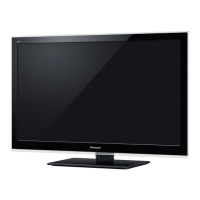
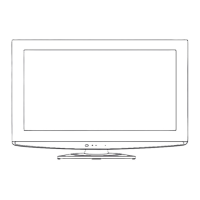
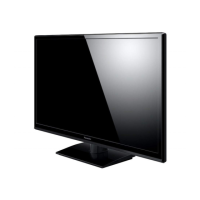

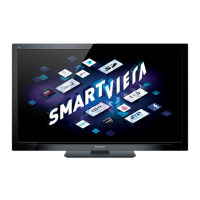

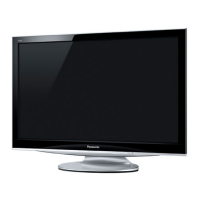



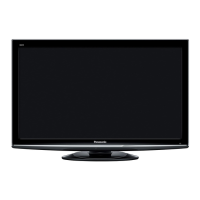
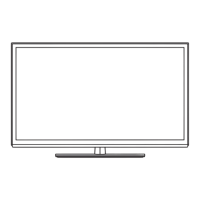
